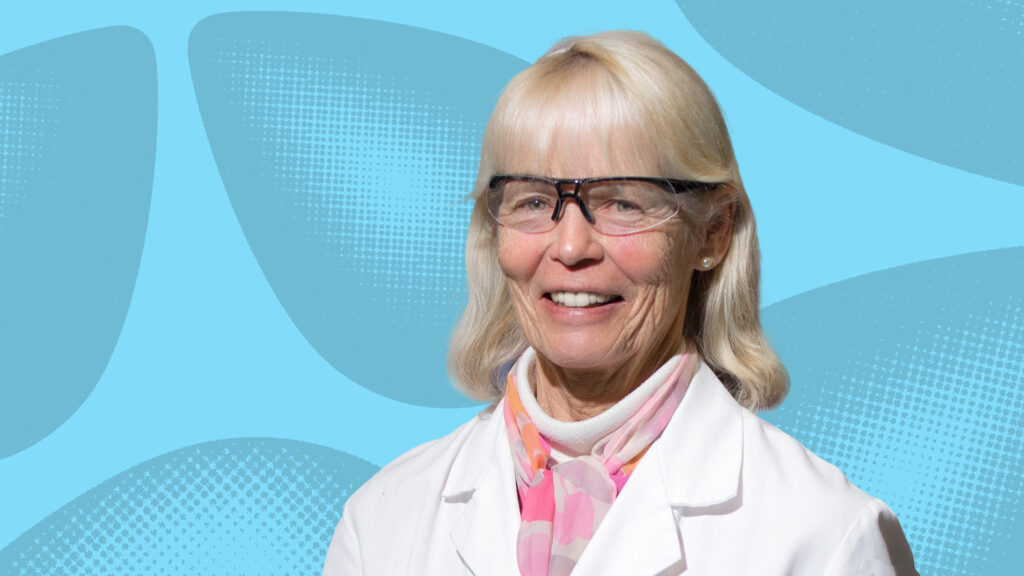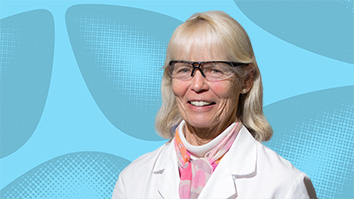
SRI’s Senior Microbiologist Emeritus receives the prestigious Society for Industrial Microbiology and Biotechnology fellowship award for exceptional dedication.
Kristien Mortelmans joined SRI after successfully isolating a mutagenesis-enhancing plasmid that remains a critical component of a bacterial test, named the Ames test, that is used worldwide to identify potentially carcinogenic drugs and chemicals. That work — which she completed as a PhD student at Stanford University — paved the way for decades of contributions to SRI and the fields of industrial, medical, and environmental microbiology. Here, she talks about that early discovery, her journey to SRI, and her lifelong fascination with bacteria.
——————————-
Receiving the fellowship award from Society for Industrial Microbiology and Biotechnology (SIMB) is an honor I never anticipated. I couldn’t believe it when they told me, and all I could say was “thank you so much.” SIMB has been a part of my life for 50 years. I became a student member of SIMB in 1969 when I transferred to Stanford from De Anza College with an Associate of Arts degree in Liberal Arts. With a major in medical microbiology, I enjoyed reading SIMB magazine to learn about bacteria in other fields. The society and this award mean a great deal to me.
An unexpected opportunity
At Stanford, my first class in medical microbiology was a turning point. When I first looked through the microscope and saw these tiny living things, I thought, “Wow, this is a world I’ve never even thought about” and I fell in love with it.
When I studied for my PhD, I worked with different plasmids to understand their effect on bacteria. Plasmids are small, independent DNA molecules, many of which contain genes that give the bacteria advantages, such as helping make them resistant to antibiotics. Many also enhance spontaneous and induced mutagenesis, like UV–light-induced mutagenesis. My mentor, Professor Bruce Stocker, was interested in how plasmids protect against the lethal effects of ultraviolet light and UV-induced mutations. So, I focused my work on that. My research focused on a mechanism that involved UV-induced and spontaneous mutagenesis.
“It was very exciting that the plasmid – pKM101 – was named using my initials.” — Kristien Mortelmans
I worked with a strain of a histidine dependent Salmonella typhimurium that I used as a recipient of many different plasmids for three years, treating various strains under different conditions. This resulted in screening thousands of colonies to determine the plasmids’ ability to enhance UV-induced and spontaneous mutagenesis. I ultimately isolated several promising plasmids. Many had the ability to not only enhance UV survival but also spontaneous mutagenesis survival.
We eventually sent the isolated plasmids to Professor Bruce Ames, a biochemist at University of California at Berkeley who was developing the Ames Salmonella microsome mutagenicity assay. One of my plasmid isolates was effective in chemical-induced mutagenesis and remains an integral part of the Ames test, used globally to detect substances that cause genetic mutation. Because these mutations often lead to cancer, the test is required by many regulatory agencies before a drug is approved and marketed. It was very exciting that the plasmid — pKM101 — was named using my initials.
Continuing Ames research at SRI
It was Professor Ames who suggested I consider continuing my work at SRI. In 1976, I accepted a job to run SRI’s Ames testing lab. Before I even started, I was invited to a meeting with the National Cancer Institute — they were looking to study the variability of the Ames test between different labs. SRI was chosen as one of three participants, in part based on pKM101. After this successful work, I became Principal Investigator on a range of contracts, including projects for the National Institute of Environmental Health Sciences, the Food and Drug Administration, and the Environmental Protection Agency.
I’ve been a microbiologist at SRI for 48 years, and I’ve enjoyed collaborating with scientists on projects involving environmental, medical, and industrial microbiology. Each one has given me insight and helped me realize that most bacteria can be used to help solve problems.
Today, as Senior Microbiologist Emeritus, I have a deep passion for what I’m doing. For me, it’s always been about bacteria; that’s what I like to work with. I like to grow them, and I like to make them happy. People ask me how I know that they’re happy. I tell them: because they smile at me.
Kristien was Editor-in-Chief of SIMB News from 1992 to 2001, elected Director from 1995 to 1997, elected President in 2000, and is currently Associate Editor.



